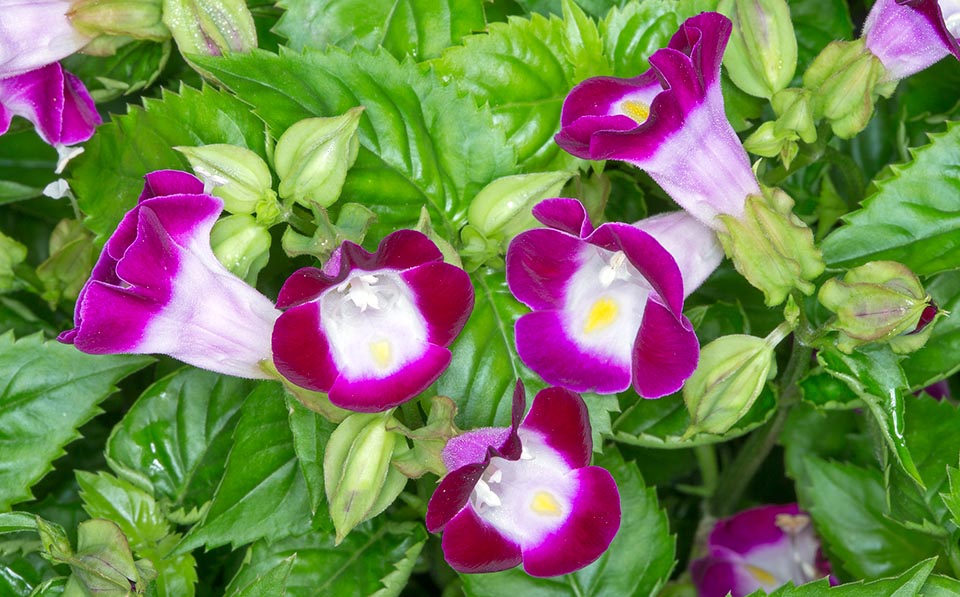Family : Linderniaceae

Text © Pietro Puccio

English translation by Mario Beltramini
The species is native to Cambodia, Laos, Thailand and Vietnam where usually grwos in open areas, along footpaths and in disturbed areas up to about 1200 m of altitude.
The genus is honoured to the Reverend Olof Torén (1718-53), chaplain of the Swedish East India Company, the species to the French physician and botanist Eugène Pierre Nicolas Fournier (1834-84).
Common names: bluewings, wishbone-flower (English); lan zhu er (Chinese); torénie de Fournier (French); amor-perfeito-de-verão, torênia (portuguese -Brazil).
The Torenia fournieri Linden ex E. Fourn. (1876) is an annual herbaceous species up to about 35 cm tall with quadrangular stems and leaves, on an about 1,5 cm long petiole, simple, opposite or sub-opposite, cordate-lanceolate with toothed margin and pointed apex, 3-5 cm long and 1,5-2,5 cm broad, of pale green colour. Racemose inflorescences carrying flowers with winged calyx about 1,5 cm long, imbutiform corolla, of about 3,5 cm of length and 2,5 cm of diameter, bilabiate, tube with yellow throat, upper lip ovate, emarginate (with apex having a little deep hollow), of blue colour and lower lip trilobate, of purple blue colour with yellow spot at the base of the median lobe, and 4 arcuate stamina merged in pairs in correspondence to the anthers at the opening of the flower. The fruits are ellipsoid capsules, about 1 cm long, with persistent calyx containing several small seeds.

Torenia fournieri is an annual herbaceous of Cambodia, Laos, Thailand and Vietnam. Highly floriferous with various shades of colour, from white to pink and to lavender © Giuseppe Mazza
It usually reproduces by seed, placed in surface just pressed, needing light for germinating (positive photosensitivity), on organic draining loam maintained humid at the temperature of 22-25 °C, with germination times of 2-3 weeks. The transplant in the open ground in the temperate climate zones is to be done when the risk of frost no longer exists.
Very ramified annual herbaceous with abundant flowering, that extends from late spring to early autumn, and of which have been selected several varieties with colours going from white to pink to lavander in various shades, utilized for borders and as ground cover.
It requires fertile, well drained soils, preferably slightly acidic or neutral, maintained almost constantly humid, but without stagnations, and an exposition in full sun or partially shaded; useful are periodical toppings, for a more compact appearance and for stimulating the blooming, and monthly fertilizations with hydrosoluble balanced products. It is often cultivated in pots and crates, even suspended, with the above mentioned modalities, for the decoration of greenhouses and of luminous ambients.
→ To appreciate the biodiversity within the LINDERNIACEAE family please click here.
